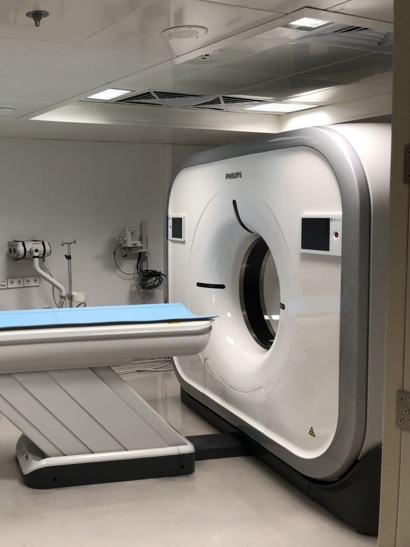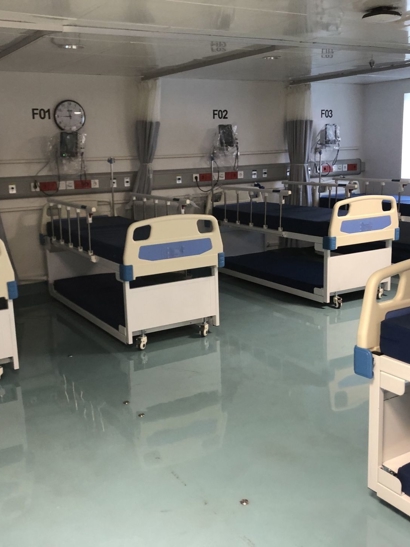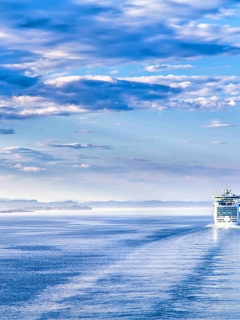Over the last century, the progress of medicine has given human beings the power to improve the health of people with conditions that would have limited their lives. But the access to that healthcare has not been distributed evenly. Less developed countries can still struggle to treat conditions that richer nations routinely resolve. It’s a situation that Mercy Ships is addressing by taking medical assistance directly to the counties that need it most
The latest advance in their capability is their first ever purpose-built hospital ship, the Global Mercy, which more than doubles the charity’s ability to save and transform lives and works alongside sister ship Africa Mercy. Jim Paterson is Marine Executive Consultant at Mercy Ships. He’s been with the organisation for 35 years, almost as long as Lloyd’s Register has been providing its services to the charity, a relationship he sees as a great match;

“I appreciate the fact that the LR team are always willing to work together with us to find solutions to every challenge that arises.“
And getting the world’s largest non-governmental hospital ship built and into service has been no mean feat. Paterson recalls conversations stretching back to in 2007, just after the conversion of a Stena ro-ro into what became Africa Mercy; “A few of us were chatting during break times, and though about what we could achieve if we were able to build something new. A conversion is always a series of compromises – you’re working within a finite structure. Africa Mercy is a fantastic conversion – a good, strong ship, very well maintained – but it was still a series of compromises. Our people always want to deliver more of the best care, so it’s always been a squeeze to get as much in as possible.”

Global Mercy’s ground-up design has many advantages. “Africa Mercy is a 1200m² hospital ship. Global Mercy has 7,000m², a significant difference, says Paterson. The reason is to bring treatments and other activities on board. With Africa Mercy, rehabilitation and pre-ops for eyes were done dockside. That’s all brought on board on Global Mercy, and the rooms themselves are bigger. The operating theatre is 40% bigger, allowing easier access for trainees to see what’s going on, and there’s space between the beds to allow group training. All training facilities are on the hospital decks, which makes it much easier to get straight from surgery to the classroom.”
The two ships, straddle Paterson’s long career and according to him, “from a technical point of view there’s no comparison – just a 40-year difference. It’s one of the challenges for our crew come who operate Global Mercy - it just doesn’t operate it like Africa Mercy. You have to operate this ship in a different way. It’s pretty advanced in terms of control systems. It’s fully automatic in the engine room.”
Lloyd’s Register (LR) recently entered into a three-year corporate partnership with Mercy Ships, focusing on safety training. Philippa Charlton, Lloyd’s Register’s Chief Marketing Officer said; “Both Lloyd’s Register and Mercy Ships are social purpose organisations focused on delivering measurable outcomes. This sponsorship programme will ensure that those who support Mercy Ships help vulnerable people in surgical need can readily access the maritime safety training they require.”
More than 50% of the world’s population live near the coast, meaning hospital ships are an extremely effective method of reaching those in medical need of surgery. Safe and accessible surgery is desperately required in both West and East Africa. Currently, unmet surgical need sits at 87% and 80% respectively for both regions, while the impact of COVID-19 has made the need greater, in a continent that has only 1 doctor for 100,000 people.


Heads of state and officials from several nations welcomed Global Mercy and Africa Mercy to Dakar in Senegal in June. Over the month, more than 300 Senegalese healthcare professionals received training on board the Global Mercy, with over 4,500 hours of training through a variety of courses, including surgical skills, SAFE anaesthesia, equipment sterilisation, nursing skills and more. The first of many training sessions addressed topics impacting delivery of safe surgical care, enabling Mercy Ships’ reach to extend well beyond the dockside, transforming many lives in years to come.
“It has been my privilege to work closely with LR during my 35 years with Mercy Ships. We have collaborated on the general operations of our small fleet and most recently on the successful delivery of the world’s largest non-governmental hospital ship. I appreciate the fact that the LR team are always willing to work together with us to find solutions to every challenge that arises.”








